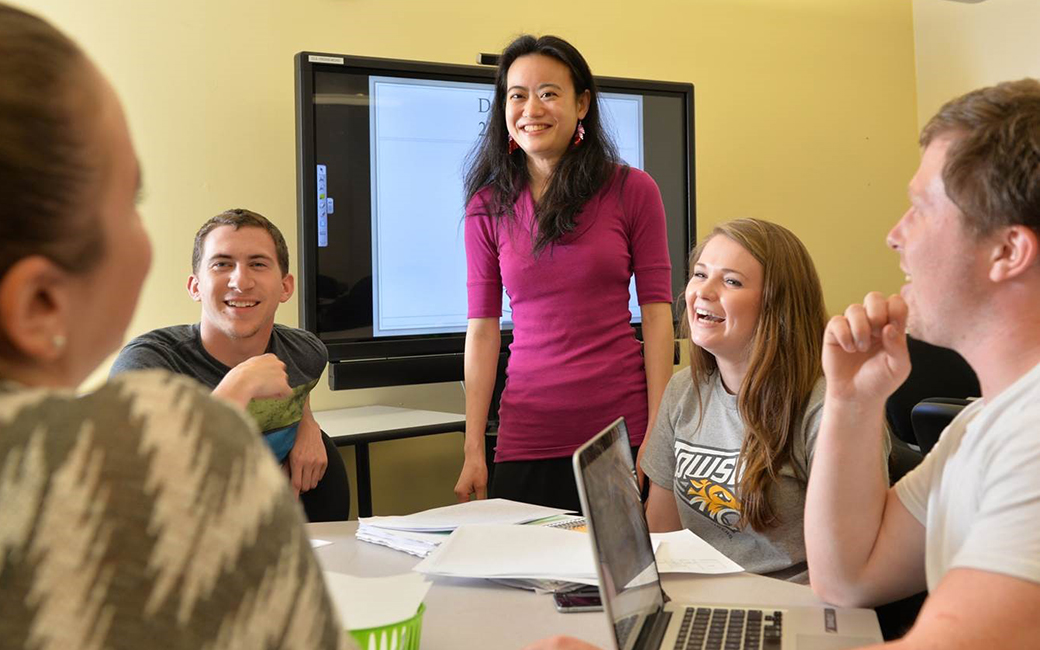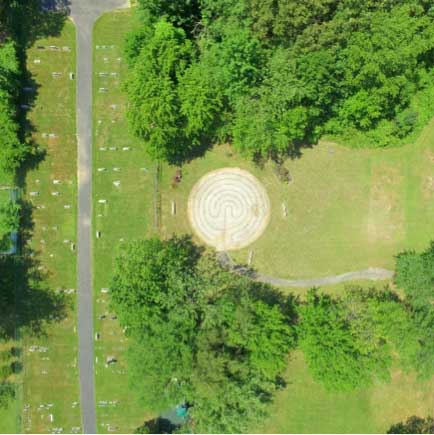Research spotlight on...Diana Cheng
What does math have to do with minotaurs?
By Megan Bradshaw

What does math have to do with minotaurs? Towson University assistant professor of mathematics Diana Cheng has been working with master’s alumnus David Thompson ’16, a Baltimore City Public School teacher, since 2014 to develop instructional activities on classical labyrinths for middle and high school students.
The activities are based on a life-sized, walkable labyrinth at the St. John’s Lutheran Church in Parkville, Maryland, and they include the use of patterns and functions, area and perimeter, coordinate geometry, and geometric constructions using semi-circles and quarter-circles.

This scholarship on labyrinths is focused on developing a real-world modeling context and related activities to teach interesting mathematical topics, which meets the Common Core State Standard for Mathematical Practice.
Cheng and Thompson have been able to develop these activities from both the teacher and student perspective. In spring 2015, undergraduate pre-service teachers in Cheng’s MATH 325: Mathematical Problem-Solving for Middle School Teachers offered additional instructional ideas after trying the activities, and the pair worked with female middle school students attending a PepsiCo Foundation-funded STEM field trip at TU in fall 2015 and high school students this past spring semester.
Cheng and Thompson also attended the American Mathematical Society and Mathematical Association of America joint meetings where they presented “Complex Mazes with Simple Paths: Mathematics with the Art of Classical Labyrinths.” At BRIDGES 2015, an international conference held in Baltimore, Maryland, they conducted a workshop entitled “Square Seeds and Round Paths: Exploring Patterns with the Art of Classical Labyrinths.” They have co-authored two papers on these activities, “Growing labyrinths from seeds” for the Oregon Mathematics Teacher, and “From blueprints to labyrinths,” which was published in the November 2016 issue of Mathematics Teacher.